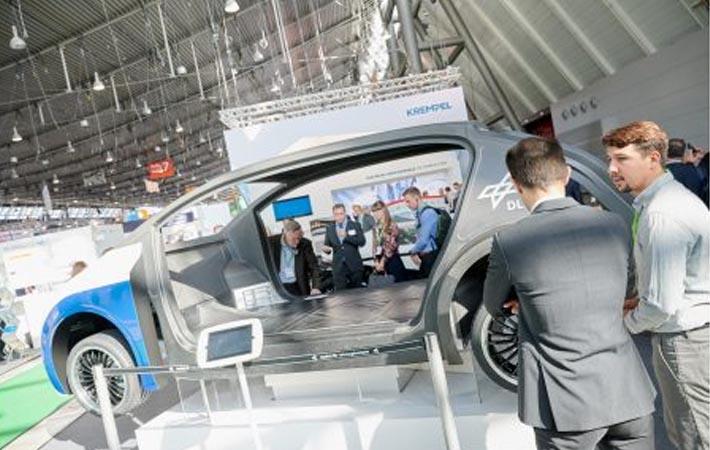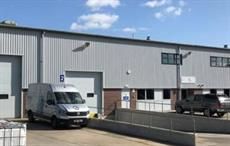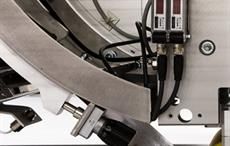Composites Europe, the leading trade fair in the DACH region (the German-speaking countries) for fibre-reinforced plastics, saw a fall in the number of exhibitors and visitors this year, by seven per cent in comparison to last year. There were 310 exhibitors and 7,581 visitors from 64 countries. Last year, there were 354 exhibitors and 8,148 visitors.
Two industries – both key buyers of glass-fibre reinforced plastics (GFRP) – created most of the trade fair’s challenges: the automotive industry, which suffers massively from declining sales and fears trade barriers, and the plant and mechanical engineering sector, where the current economy has similarly depressed the numbers and the mood.Composites Europe, the leading trade fair in the DACH region (the German-speaking countries) for fibre-reinforced plastics, saw a fall in the number of exhibitors and visitors this year, by seven per cent in comparison to last year. There were 310 exhibitors and 7,581 visitors from 64 countries. Last year, there were 354 exhibitors and 8,148 visitors.#
Positive signals, meanwhile, are coming from the aerospace and the booming construction sectors.
“Trade fairs are seismographs of their industries – this is true as well for Composites Europe, which in an economically heterogeneous environment showed its importance for bringing new ideas and innovations to market,” says Michael Freter, managing director of Reed Exhibitions Deutschland.
The same conclusion is reflected in the market report presented in Stuttgart by AVK – Federation of Reinforced Plastics. After years of growth, it found, the market for glass-fibre reinforced plastics in Europe has stagnated in 2019. Total production volume in 2019 is on track to remain flat compared to the prior year, at 1.141 million metric tonnes.
Construction/infrastructure and the transport sector still are the two main application areas for GFRP. The current sales crisis in the automotive sector, which responds more quickly than the construction industry, shows up directly in the market developments expected by the GFRP industry. “Due to market shifts, the future market prospects of the construction/infrastructure sector must be seen for the first time as greater than those of the transport sector,” says Dr. Elmar Witten, managing director of AVK.
A special focus of this year’s Composites Europe was on the digital process chain. Joining forces in group exhibits in the “Process live” area, mechanical and plant engineering companies showed how their technologies interact – and they did so while operations were ongoing in order to demonstrate the individual processes in a larger context. Three exhibitors had participated in the debut of the area last year – this year there already were 16 companies.
One of the overarching emerging themes that’s captured the attention of the entire composites industry and virtually all user industries is multi-material solutions. Once again this year, the Lightweight Technologies Forum at Composites Europe showed how lightweight multi-material engineering can be implemented in an economic and resource-efficient way – in the automotive industry, aerospace and mechanical engineering.
“In the lightweight construction landscape, Composites Europe and the Lightweight Technologies Forum serve as an important interface for metal and fibre-reinforced composite technologies,” says German economics minister Peter Altmaier, underscoring the significance of the forum.
Organised by AVK on behalf of Composites Germany, the International Composites Conference (ICC) took place concurrently with Composites Europe for the first time. The trade fair and the conference converged thematically, too. One example were the themed guided tours of the exhibition area that complemented the conference presentations.
The 15th Composites Europe will take place in Stuttgart from November 10 to 12, 2020.
Fibre2Fashion News Desk (SV)


